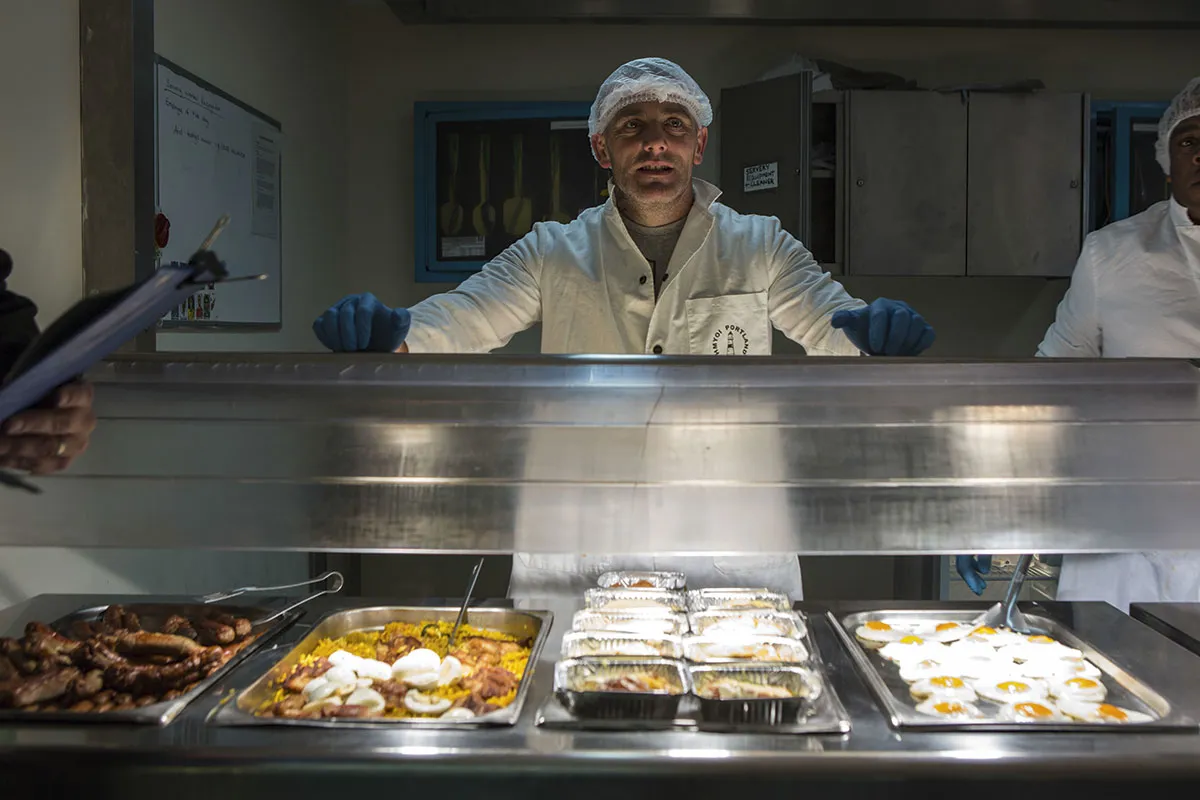Scientific progress is characterised by the transition from the supernatural to the natural, and the mystical to the comparatively mundane. Before the modern era of psychology and neuroscience, mental illness was understood to be evidence of the supernatural: demonic possession, unhappy deities or vengeful curses. Unusual behaviour would be addressed through prayer, penance and exorcism.
Towards the end of the Renaissance, when the church’s power over civil life began to wane, there was greater acceptance of more mundane causes of emotional distress or unusual behaviour. Though the treatment of mentally ill individuals in 16th-Century asylums could not be called humane, the assumption, at least, was that the causes of illness were natural or physical and they were treated with purges or emetics.
Today, one of the most mundane – but profound – influences on mental health and behaviour emerging in the scientific literature is food and nutrition. While I am not suggesting that nutrition answers all of our questions around the mind and mental health, it is a key and undervalued part of the overall picture and its effects have been repeatedly demonstrated in one environment in particular: prison.
A series of studies have found that improving prisoners’ nutrition reduces incidents of violence by, on average, 30 per cent. This is a fascinating and remarkable series of results that should make us think very carefully about the food that we choose for ourselves, feed to our children or provide in our institutions.

Nutrition and behaviour in childhood
Decades of research have found a relationship between nutritional status and child behaviour. Omega-3 fatty acids make up about 35 per cent of brain cell membranes and are important for neurons to send and receive messages. These dietary fats are therefore crucial during early brain development from conception to two and half years old.
In fact, according to a study published in March 2021 in The American Journal Of Clinical Nutrition, low omega-3 intake during pregnancy is associated with smaller brain size in childhood. Another research paper published in The Journal Of Pediatrics in 2014 found a link between early malnutrition and behaviour in children aged five to six, with those who had low fatty acid intake more likely to show behaviours like physical aggression, defiance and vandalism.
These behaviours themselves are a signal that can predict whether a child is likely to take part in antisocial or violent behaviour as an adolescent or adult.
Of course, diet is not the only contributing factor. How a child or young person learns to respond to stress or threats is also a feature of parenting, language ability and attachment style. So can we disentangle the influence of nutrition from these other features?
Yes, to an extent. An assessment of 4,000 Dutch toddlers found that bad behaviours in the children were reduced when the mothers had supplemented with folic acid during the first trimester of pregnancy. The protective effect of supplementation was statistically significant, even after controlling for maternal age, educational level, national origin and psychopathology.
Read more about crime:
- Why are we so obsessed with true crime?
- Forensic genealogy: How police are using family trees to solve cold cases
- Can a head injury make you more prone to criminal behaviour?
In children with ADHD, a fully blinded randomised controlled trial – the gold standard for experiments of this nature – found that a combined multivitamin and mineral (and sometimes omega-3) tablet given for 10 weeks significantly reduced aggression and “hot tempers, fights with other children, [and] explosive angry outbursts”.
ADHD is a neurodevelopmental disorder that affects around 5 per cent of children, predominantly boys. Children with ADHD who are unable to modify their behaviour may be over 100 times more likely to be permanently excluded from school, which itself leads to an increased risk of criminal behaviour and incarceration.
So, poor nutrition in childhood can influence brain development in such a way as to increase the likelihood of violent and aggressive behaviour in later life. And this brings us back to prisons.
Prison food
There are few regulations on the quality of food in prison. In the UK, The Prison Rules, which is a piece of legislation that governs how prisons are run, stipulates that prison food should be “wholesome, nutritious, well prepared and served, reasonably varied and sufficient in quantity”.
In reality, this is subject to wide interpretation since terms like ‘wholesome’ and ‘nutritious’ have no clinical definition. Additionally, prison food in the UK is provided by private contractors, meaning that profit margins and shareholder returns factor into the variety and quality of food provided. According to nutrition charity the Food Foundation, it costs £5.99 per day for an adult to meet the UK’s Eat Well healthy diet recommendations. An average of £2 a day is spent on a prisoner’s meals.
This means that, typically, the meals on offer are highly refined, ultra-processed food of low nutrient density. The standard breakfast pack is composed of a 30g (variety pack size) box of breakfast cereal; sachets of coffee, tea and sugar; a carton of milk; white and sometimes brown bread for toast; jam and margarine. Lunch is usually a white bread sandwich served with crisps, biscuits and a piece of fruit.
Images obtained from a serving male prisoner depict the reality of the dinner provided: battered fish and chips, sausages and hash browns, pasty and potatoes (see image below).

Having worked in a large women’s UK prison for a number of years, I can verify this was typical of the food on offer. A highly processed diet with little fresh produce is likely to contribute to deficiencies in micronutrients known to be supportive to healthy brain structure and function, such as folate and magnesium (found in leafy green vegetables) and omega-3 fats (found in oily fish).
The discussion around prison nutrition often becomes contentious in relation to philosophical conflicts as to whether the function of prison is rehabilitation or punishment. But whether or not you think offenders deserve quality food, the relationship between improved nutrition and overall prison safety is much less complicated.
The UK government’s most recent figures show that suicides in prison have increased 13 per cent compared to the previous 12 months. In the most recent quarter, self-harm in men’s prisons rose by 8 per cent and a whopping 47 per cent in women’s. At the same time, the number of assaults on staff rose by 14 per cent. The numbers are growing in the wrong direction, and nutrition could provide a quick and achievable remedy.
The Prison Studies
Scientific evidence for the effect of improved nutrition on prisoner violence can be found in what I call ‘The Prison Studies’. These are five international nutrition trials that have been carried out in prisons over the last 25 years. The inmates were given supplements of vitamins and minerals, and some received omega-3 too. The studies each reported remarkably similar outcomes of around 30 per cent reductions in violence when prisoner nutrition was improved.
Another trial is now underway to explore the role of omega-3 and prisoner aggression in Australia on the basis of these studies and prior evidence showing a relationship between lower omega-3 status and greater tendency to aggression in Australian prisoners.
The benefit of supplements over whole foods in these studies is that participants do not know whether they are getting the real supplement or the placebo. It’s virtually impossible to carry out these studies with actual food; you know whether you are eating an apple or a sausage roll.
What is important about these studies is that they were all randomised, blinded and placebo-controlled. This methodology, which aims to reduce the potential for bias in clinical research, is considered the best way to test the efficacy of a treatment. Indeed, it is the ‘gold standard’ means of discerning whether a drug or other treatment really does what it says on the tin.
Finally, there were no reported side effects of taking the supplements, making it a safe intervention. What this indicates is that improved nutrition presents a cheap, low-risk and accessible opportunity to reduce the growing rates of violence in UK prisons. In an era in which we are seeing record levels of self-injury and suicide, this could equate to lives saved, as well as safer prisons for staff.
But how does improved nutrition compare to other treatments? A recent meta-analysis reviewed the impact of psychological treatments (such as anger management and ‘thinking skills’ courses) for violent offenders. Treatment duration varied from 24 hours to 470 hours and showed that they were not effective at reducing violent incidents in prison compared to controls.

A now-old study showed that treatment with lithium reduced major infractions (including both threats and actual violence) in prison by around 40 per cent. However, the participants could guess whether they were receiving treatment or placebo, introducing a risk for bias, and there was a high dropout rate due to the side effects of lithium treatment, which included nausea, vomiting, dry mouth, tremors and excessive urination.
A preliminary study of a 10-week yoga course found improved behavioural performance. Yet it is not clear whether this would translate to risk of real-world violence. In addition, aggressive men may be more likely to drop out of exercise courses, or be asked to leave due to misconduct.
It therefore seems as if nutritional interventions could offer better outcomes than other treatments, with fewer side effects.
Independent of violence, improving nutrition in prison could provide other benefits. Up to 90 per cent of prisoners are thought to have a diagnosable mental health condition. In this area, there is a growing scientific consensus on the importance of good nutrition for mental wellbeing. Again, it is unlikely that better food will resolve all of these issues, but it may meaningfully reduce the levels of distress and the burden on prison security and healthcare staff.
It would be naïve to suggest that inadequate nutrition was the leading or sole cause of criminal behaviour. Other known risks include poverty, social deprivation, parental stress and mental ill health, as well as being in the vicinity of other rule-breakers. But of these known risk factors, better nutrition is by far the most accessible and fast-acting: improvements are measurable in weeks not years. It’s also comparatively cheap.

It currently costs the UK government over £44,000 to house a single prisoner for a year, up nearly £10,000 since 2015. Following the results of one of the prison studies, published by Dr Bernard Gesch and colleagues in 2002, an economic analysis was commissioned by the Home Office which showed that providing prisoners with supplements would cost around £40 per prisoner per year.
That was in 2002, but the popularity of nutritional supplements today has likely lowered those production costs. Providing more fresh (perishable) produce may cost more than the current highly processed fare, but those costs are likely to be offset by savings on security and staff turnover.
For a potential 30 per cent reduction in violence, enhanced physical and mental health, fewer riots and better staff retention, improved nutrition would seem like a worthwhile investment. In addition, costs could be offset through agricultural programmes where food used to feed prisoners is grown on site. Such projects help to provide skills, as well as improved nutrition.
When it comes to making prisons safer for prisoners and staff, improving nutrition really is a no-brainer.
- This article first appeared inissue 374ofBBC Science Focus Magazine–find out how to subscribe here
Read more about nutrition: